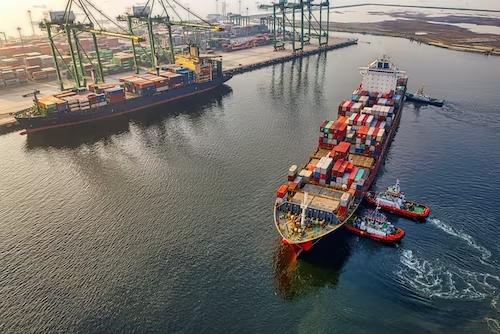
The City of London After the EU: The Effect of Brexit on the UK’s Financial Services Industry
November 30, 2022
Competition law in development
November 30, 2022Article written by Divya
The shipping costs are the reasons for the inflation
The current Inflationary state of the economy could have been prevented. Studying data from 143 countries over the past 30 years, the International Monetary Fund (IMF) found that shipping costs are an important driver of inflation around the world: when freight rates double, inflation picks up by about 0.7 percentage points. 80% of world trade is carried out by sea, in such a case focusing on Gross Domestic Brut (GDP) and undermining the cost of transport made by sea was a mistake on the part of economists. Shock waves created by the pandemic upended supply chains and increased supply costs, drastically affecting container shipping contracts in existence. Overwhelming supply capacity created an increase in ocean freight, hiking the overall cost of shipping on transoceanic trade routes by seven-fold, consequently following March 2020, building pressures on wet and dry shipping lawyers working on existing and future container shipping contracts to come into existence. Drastically impacting consumers, increased import costs hit the docks in two months, whereas consumer payments at the cash register hit their peak in 12 months, stacking up slowly but surely.
What are the factors?
Intended destination, service charges, season, currency, fines, terminal fees, bunker capacity, and container capacity do influence ocean freight rates. However, IMF research finds the monetary policy framework and how it is implemented to shape structural characteristics of the economy (land, labour, capital, entrepreneurship) have the power to change the route of inflation in it. Effectively, due to overwhelming freight rate costs, strong consumer demand, and lower bargaining powers of shippers, low income and landlocked countries consuming high or medium amounts of goods will be hit severely by inflation, compared to their counterparts. Affecting the existing contracts and negotiations of future suppliers’ contracts being bargained considerably by commercial and maritime lawyers dealing with wet and dry shipping. Container capacity injections may result in balancing out the demand intensity, although gathering capital and building high-capacity containers may take time.
Consequences
In the meantime, low GDP and high ocean freight rates, fuel inflation, port congestion, and decreasing container volume availability, easing closer to ship demolitions. Xeneta’s Long-Term XSI® Public Indices revealed yet another monthly hike in June 2021 in long-term ocean freight rates, with global container prices climbing by 3.2%. The development follows a 2.2% increase in August and an unprecedented 28.1% jump in July, leaving rates now standing 91.5% up year-on-year. Resulting in low carrier 2 profitability levels, piling up the pressure on shippers, but this was not the peak of the shipping cycle. Spot rates freeze by CMA CGM from September 2021 until February 2022 was a good attempt to slow down the shipping cycle while putting pressure on dry shipping lawyers to negotiate contracts, effectively getting crumbs off the profit table. Bouncing back to reality, US freight rates increased 28% year over year but reduced by nearly 2% month over month in July 2022, indicating the US market has hit its peak freight rates, per the July Cass Freight report. This increase freed up container capacity, easing up inflation in the economy earlier this year, and relieving the maritime legal industry. Not for long though…
Pressure on shipping lawyers
As the legend goes, in the shipping world, good times last shorter. Even if, global contracted rates fell by only 0.6% in November 2022, following on from September’s 1.1% decline (the first falls since January 2022), Xeneta’s CEO points out that November saw the first demolition of a container ship with a capacity of more than 1 000 TEU since March 2021 (the 32-year-old Mathu Bhum). XSI®’s crowdsourced data indicates no signs of panic yet, although the big picture points towards a decline, and eventual collapse in the shipping cycle. Building back the pressure on now-relieved dry and wet shipping lawyers.





